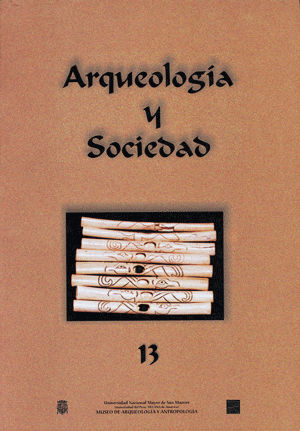THE CATHAL SYNDROME HÜYÜK: OBSERVATIONS ON EARLY AGGLOMERANTS TRENDS
DOI:
https://doi.org/10.15381/arqueolsoc.2000n13.e13124Abstract
The author approaches the problematic that is presented when interrogating us on the emergence of the urbanism in the Andean area. He has made a theoretical revision of the models applied in that zone, which have been based on che paradigms of evolucionist court of Gordon Childe and Julian Steward, researchers that worked in che patterns of establishments of Mesopotamia, Greece, ltaly and medieval Europe. The "Syndrome of Catal Hüyük" refers to the scientific tradition of explaining the Andean urbanism making a parallel with the development phases discovered in that establishment of the Middle East. The author proposes the assumption of own models of analysis and obtain of this way, an appropriate understanding of the first Andean complex societies that have been characterized mainly by a pattern of «antiurban» establishment. This doesn't mean to ignore the evolucionist proposals, but to assimilate the important propositions and to apply them to our reality.Downloads
Published
Issue
Section
License
Copyright (c) 2000 Krzysztof Makowski Hanula

This work is licensed under a Creative Commons Attribution-NonCommercial-ShareAlike 4.0 International License.
THE AUTHORS RETAIN THEIR RIGHTS:
a. The authors retain their trademark and patent rights, and also on any process or procedure described in the article.
b. The authors retain the right to share, copy, distribute, perform and publicly communicate the article published in the Arqueología y Sociedad (for example, place it in an institutional repository or publish it in a book), with an acknowledgment of its initial publication in the Arqueología y Sociedad.
c. The authors retain the right to make a subsequent publication of their work, to use the article or any part of it (for example: a compilation of their works, notes for conferences, thesis, or for a book), provided that they indicate the source. of publication (authors of the work, journal, volume, number and date).






